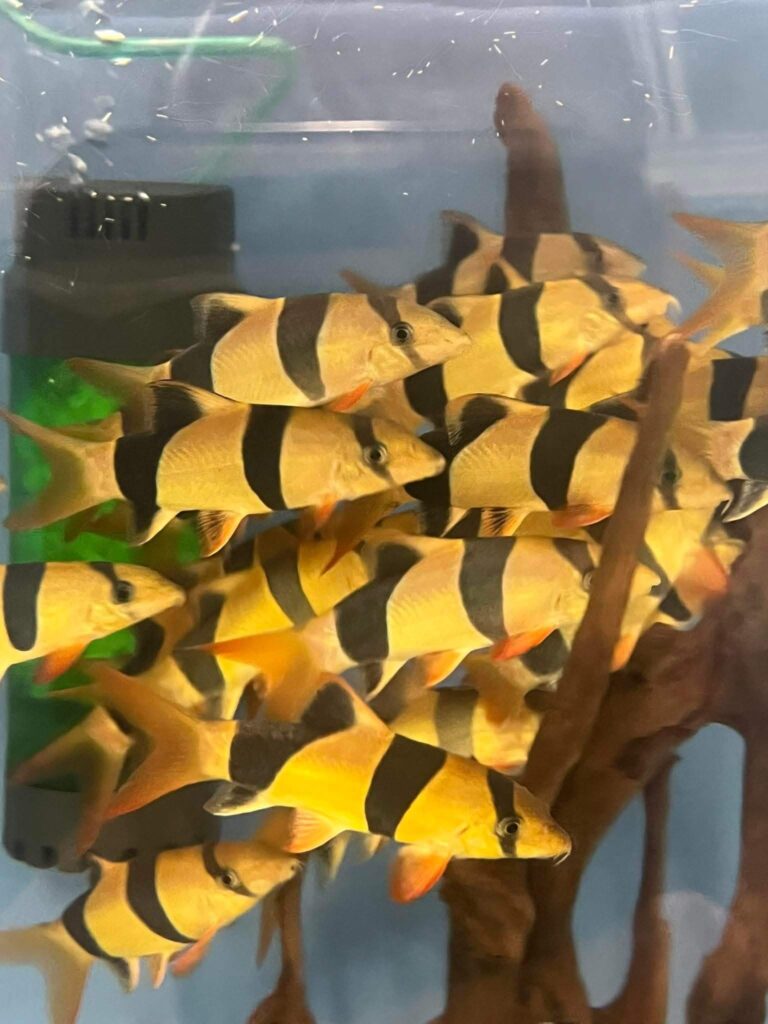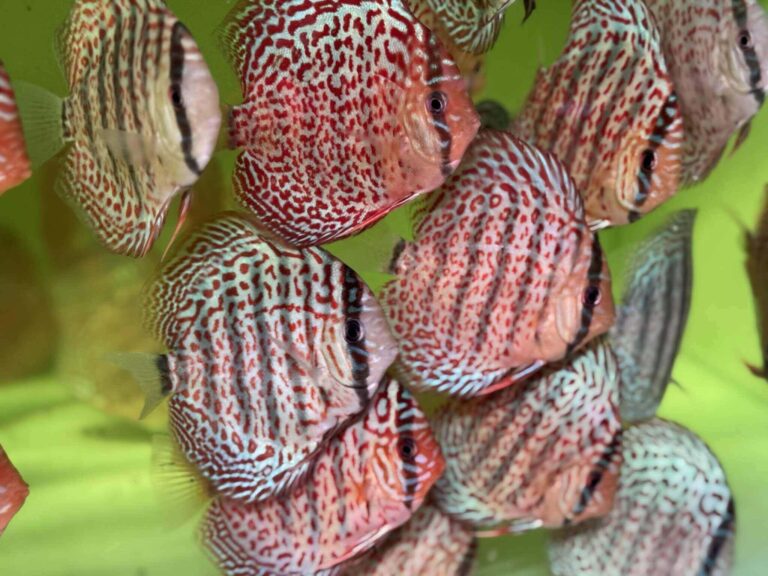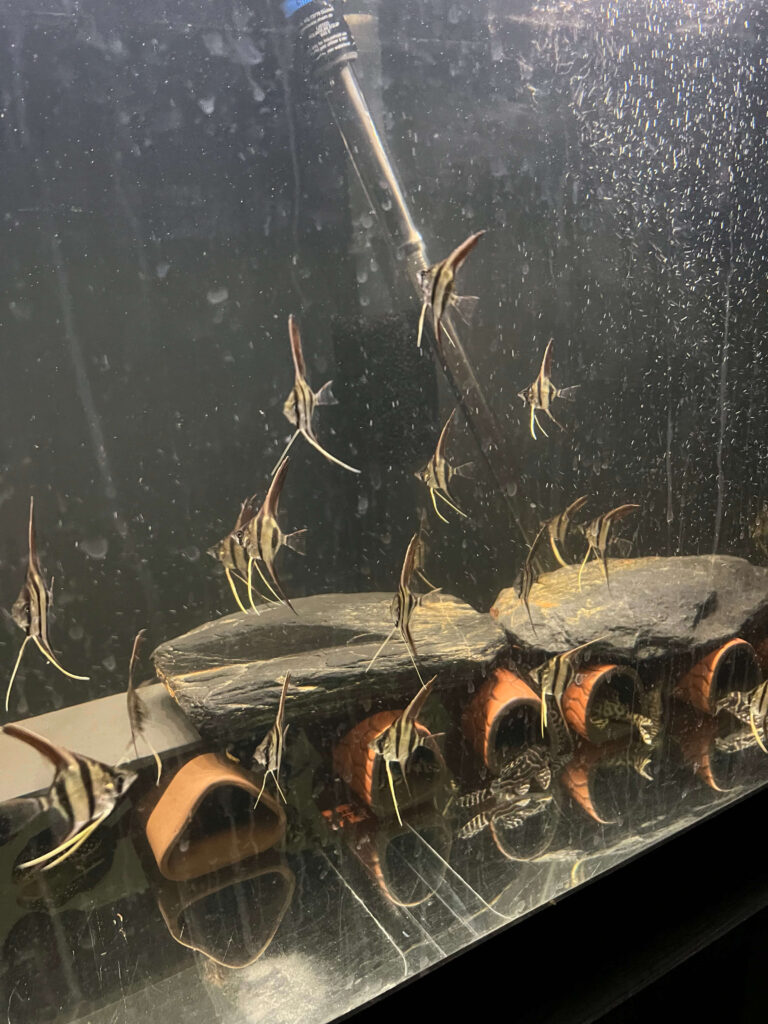Infor
Gallery
Description
Gallery


Description
The L600 Leopard Cactus Pleco, or Pseudacanthicus leopardus, is a large and visually striking pleco species known for its bold leopard-like pattern and territorial nature. They are also referred to as Orange Seam Leopard Cactus Plecos due to their vibrant orange fin edges. Native to fast-moving, rocky rivers in South America, they thrive in well-maintained aquariums that mimic their natural habitat.
Here’s a guide to providing optimal care for your L600:
Tank requirements
Size: These plecos reach a substantial size, growing up to 12-16 inches (30-35cm). A minimum of 120-150 gallons is recommended, with larger tanks (180+ gallons) being preferable for long-term health and to accommodate their territorial behavior.
Environment: Mimic their natural habitat by including plenty of hiding spots and sheltered areas. Use driftwood, caves, and rock formations to create these spaces.
Substrate: A soft substrate like sand or fine gravel is best to protect their delicate barbels.
Filtration: L600 plecos produce a significant amount of waste, so powerful filtration is crucial. Strong canister filters or multiple sponge filters are recommended to maintain excellent water quality and provide the necessary water flow they appreciate.
Water Flow: Replicate their natural, fast-flowing river habitat by providing moderate to strong water circulation within the tank.
Water parameters
Temperature: Maintain a stable water temperature between 74-82°F (23-28°C). Some sources recommend a slightly warmer range of 79-86°F (26-30°C). A reliable heater is necessary to maintain this range, and monitoring with a thermometer is always a good practice.
pH Level: L600s prefer slightly acidic to neutral water, with a pH range of 6.5-7.5 being ideal.
Water Hardness: Soft to moderately hard water is preferred (2-15 dGH). Some sources specify a general hardness of 50 – 150ppm.
Diet and feeding
Primarily Carnivorous: Despite the “Leopard Cactus” name, the L600 is primarily a carnivore.
High-Protein Diet: Offer a high-quality sinking pellet or flake food designed for carnivorous fish. Supplement their diet with live or frozen high-protein foods like bloodworms, brine shrimp, insect larvae, prawns, and chopped mollusks.
Vegetable Matter: While primarily carnivorous, they also benefit from occasional servings of vegetables like blanched zucchini, cucumber, or spinach.
Driftwood: Although not a primary food source for this species, driftwood should be included in the tank as it provides hiding spots and can contribute to overall well-being.
Feeding Frequency: Feed them once or twice daily, providing only what they can consume within a few hours to prevent overfeeding and maintain water quality.
Compatibility and temperament
Territorial but Generally Peaceful: L600 plecos are territorial, especially towards other bottom-dwelling fish, particularly other plecos. However, they are generally peaceful with similarly sized or larger tank mates that occupy different areas of the tank.
Recommended Tank Mates: Suitable tank mates can include larger, robust fish like Red Shoulder Severums, Silver Dollars, and certain large Cichlids.
Avoid: Do not house them with smaller, docile fish that may become stressed or prey, nor with aggressive or fin-nipping species. Avoid keeping multiple L600s in the same tank unless it’s exceptionally large and offers an abundance of hides and established territories for each fish. According to Aqua Imports, they are aggressive for a pleco, and you should provide plenty of caves to prevent territoriality.
Lifespan
10-15 Years: With proper care, L600 Leopard Cactus Plecos can live for 10-15 years, making them a long-term commitment for dedicated aquarists.
Breeding
Cave Spawners: L600 plecos are cave spawners, with males guarding the eggs within caves.
Breeding Conditions: To encourage breeding, provide plenty of caves of varying sizes, with a rough interior surface for good egg adhesion. Feed a protein-rich diet to both male and female, ensuring they are well-fed and healthy.
Water Changes and Temperature: Some breeders suggest a specific breeding regimen: maintaining warm water (around 30°C) for a period, followed by turning off the heater and performing a water change with colder, softer water (around 20-22°C).
Parental Care: Once eggs are laid, the male takes over parental care, fanning the eggs to oxygenate them and prevent fungal growth.
Note: L600 Leopard Cactus Plecos are considered an intermediate to advanced species, requiring a dedicated aquarist due to their size, territorial nature, and specific dietary needs. Thorough research and a well-planned aquarium setup are essential for their well-being.
New Product
- 40$
- 15$
- 40$





